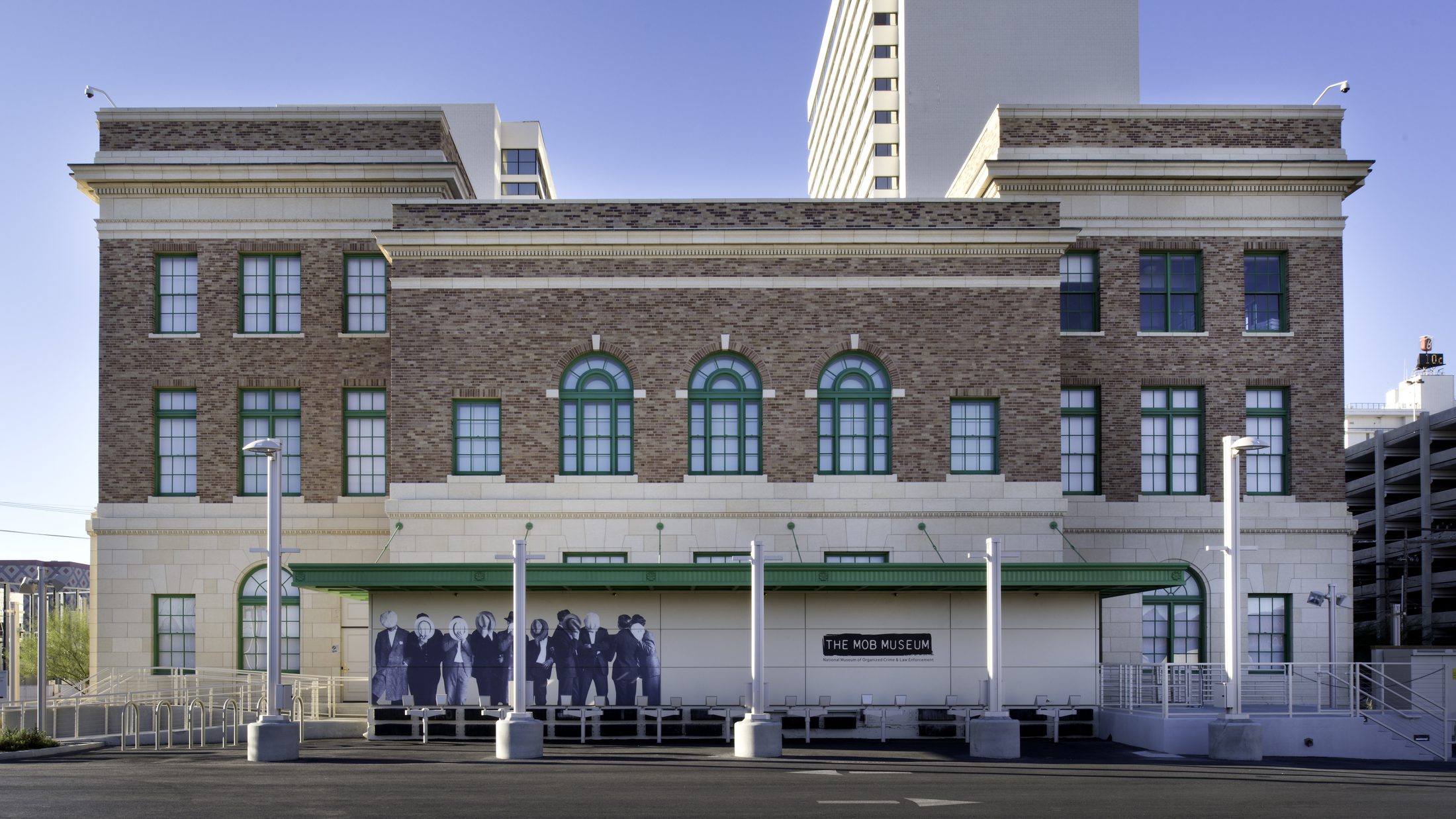Funen, Denmark
Egeskov Castle
This floating castle appears to be from an enchanted fable, but in actuality it is Europe's best preserved Renaissance water castle.

Photo Credit: Kevin G Reeves / DLR Group

Photo Credit: Kevin G Reeves / DLR Group
Presented in partnership with:
Well before Americans developed their obsession with true crime tv and podcasts, they received their first televised glimpse into the seedy underbelly of corruption with the Kefauver hearings. A senate investigation into 1950s organized crime that tallied more than 30 million Americans tuning in to watch mobsters and politicians say they “didn’t see nothin’.” The investigating committee made a stop at the Las Vegas Courthouse, which was a surprise to no one considering the strong scent of lawlessness emanating from the city since the prohibition era.
Back in the 1920s, laws against the sale of liquor were seen as mere suggestions for many, including Jim Ferguson – the first mobster of Las Vegas. Undercover federal agents caught a whiff of the elicit operations (bathtub gin has a heckofan odor!) and spent a week buying booze all over town. Thanks to their bootleg bender, they had enough evidence to stage a massive raid on Las Vegas’ “booze halls.” They busted in and closed down more than a dozen places within Ferguson’s territory. But Ferguson had an ace up his sleeve.
At that point, “Hundred dollar bills stumbled over each other to get into the city treasury,” and Ferguson was on the giving end. The funneled funds guaranteed his liquor dens quickly reopened, but not for long. Shortly after, federal agents seized the largest quantity of illegal liquor (all controlled by Ferguson) in the city’s history. Despite their best efforts, and Ferguson’s eventual downfall, bootlegging persisted and casinos eventually became entangled in the city’s shady dealings. It wasn’t long before the federal government caught wind of something fishy out west.
When the Senate committee finally made its way to the Las Vegas courthouse, the town suddenly turned bashful. Many of those interviewed flat out denied knowing anything. One journalist stated the “crime investigating committee blew into town yesterday like a desert whirlwind, and after stirring up a lot of dust, vanished.”
As the dust settled on the neoclassical structure that housed many compelling moments over its lifetime, the courts would close, a postmaster would move in, and ultimately the city would assume ownership of the building under one condition: it be used for a cultural purpose. So in 2012 DLR Group stepped in to renovate and make way for The Mob Museum, where the focal point remains the restored second-floor courtroom where U.S. Senator Estes Kefauver held his hearings to expose organized crime.
Opened in 2012, the museum preserves many mobster memories, while acting as a catalyst in the redevelopment in the downtown area. And if visitors have an overwhelming feeling they can’t stand the heat, it’s not the solar heated water system, but more likely the moonshine emanating from the basement where a speakeasy awaits – offering a chance to taste the same kind of hooch Jim Ferguson swore he knew nothin’ about.
 36.1728198, -115.1412395
36.1728198, -115.1412395
Need an account? Sign up
This site is protected by reCAPTCHA and the Google Privacy Policy and Terms of Service apply.